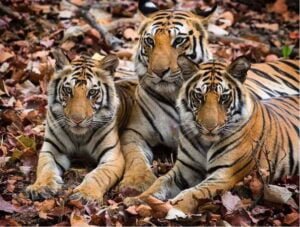No products in the cart.
The Wonderful Wild ! Tiger
World Tigers Day 29 July
Tigers are a significant part of India’s wildlife heritage, and the country is home to the largest population of wild tigers in the world about 70% tigers are in india .
CORBETT NATIONAL PARK ( Uttarakhand )

The Jim Corbett National Park was established in 1936 in the Home to 488 iffrent species of plants. 600 species of birds and a variety of wild animals like elephant, Corbett National Park is a dream destination for a bird-watcher, angler or an animal lover,
Se pesanjayegian armportam role by atting as a protected area for the endangered Bengal Tiger and is the Spread over an area of approx. 521 sq km. Corbett National Park is one of the best managed and protected areas in the country and attracts thousands of Indian and foreign visitors each year. Located in the foothills of Himalayas the park can be accessed by four different gates it is advisable to book the safan in advance to make the most of one’s trip.
Amangarh Tiger Reserve ( Uttar Pradesh )

Amangarh Tiger Reserve is located in Bijnor district of Uttar Pradeshout is spread over an area of 95 square kilometres (36square miles) and is one of the four tiger reserves In Uttar Pradeshu Thereserve was originally part of the Jim Corbett National Park, but wasnotified as a separate tiger reserve in 2012.
The landscape here is a mesmerising blend of dense forests, rolling hills, grassy meadows, and pristine water bodies. It is a heaven for wildlife enthusiasts, nature lovers, andadventure seekers alike.
The reserve is home to a plethora of wildlifespecies, including the majestic Bengal tiger, which is the apex predator ofthe region. Apart from tigers, the reserve also houses other big cats likeleopards and wildcats. Herbivores such as spotted deer, sambar deer, andIndian gazelles roam the grasslands and woodlands. The avian population of Amangarh is equally captivating. With over 300 species of birds, the reserve is a birdwatcher’s paradise.
Train: The nearest Railway Station from Amangarh Tiger Reserve is Najibabad Railway Station in Bijnor.
Road: Bijnor is well connected by road to all major cities through NH 709 AD, Meerut-Delhi Paudi Highway A 126. It is accessible with an excellent network of buses/taxis by road.
PENCH ( Madhya Pradseh )

Nestled in the southern slopes of the Satpura ranges of central India, Pench Tiger Reserve (757.90 sq kms) lies in southem Madhya Pradesh, bordering Maharashtra. The Pench National Park which constitutes the core of the Tiger Reserve was notified in 1983. The total core area of the Park is 292.86 sq kms, and comprises the Indira Priyadarshini Pench National Park and the Mowgli Pench Sanctuary. Pench was brought under Project Tiger in 1992. Pench National Park gets its name from the Pench river that flows through it, dividing it into the western Chhindwara Block (141.61 sq kms), and the eastern Seoni Block (145.24 sq kms). Over 1,200 species of plants have been recorded in the area including several rare and endangered plants as well as plants of ethno- botanical importance.
Pench famous National Park is the original setting of Rudyard Kipling’s work, The Jungle Book. The character, Mowgli, was inspired by Sir William Henry Sleeman’s pamphlet, ‘An Account of Wolves Nurturing Children in Their Dens which describes n jungle boy captured in Seoni district near the village of Sant Baori in 1831. Many of the places described in The Jungle Book are actual locations in Stoni district, like the Waingunge avar Khan was killed, Kanhiwara village and the Seoni hills.
Forest and Wildlife
Pench is prime tiger country. The area has always been rich in wildlife The heterogeneity of mixed forests, shrubs and grasslands here creates a favourable condition which harbours a dense population of cheetal and sambhar, the key prey species for tiger and leopard. Pench Tiger Reserve has the highest density of herbivores in India, 90.3 animals per square kilometre.
The area is especially famous for its huge population of gaur (Indian bison), cheetal, sambar, neelgai, wild dog and wild pig. The key predators here are the tiger followed by the leopard, wild dog and wolf. Other animals found in the Park include the sloth bear, chousingha, chinkara, barking deer, jackal, fox, palm civet, small Indian civet, jungle cat, hyena and porcupine.
Pench Tiger Reserve is also among the best areas for bird watching. Over 285 species of resident and migratory birds including the Malabar pied hornbill, Indian pitta, osprey, grey-headed fishing eagle, white-eyed buzzard are found here. Four species of the endangered vulture, white-rumped, long-billed, white scavenger and king vulture can be seen in good numbers in these forests. In winter, thousands of migratory waterfowl including the brahmini duck, pochards, barheaded geese and coots come to the Pench reservoir and the tanks within the Park. The best time to visit Pench is summer as animals come out in search of water. Waterholes in the Park provide good opportunities to view some of its residents.
















